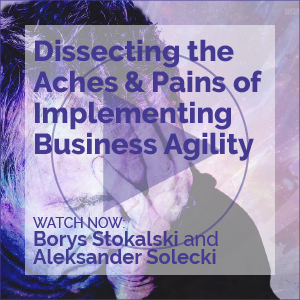Rationality in the Real World, Part 1
Rationality in the Real World, Part 1
Connecting the Remote End User
The time has come for IT leaders to plan for their next generation of supported remote Internet access, particularly as more mainstream end users are increasingly likely to attempt to use one or more of the various connection options, raising the probability of security lapses, creating new support issues, and increasing the cost of inaction.
Connecting the Remote End User
The time has come for IT leaders to plan for their next generation of supported remote Internet access, particularly as more mainstream end users are increasingly likely to attempt to use one or more of the various connection options, raising the probability of security lapses, creating new support issues, and increasing the cost of inaction.
An Enterprise Soap Opera, Episode Two
In June 2003, I commented on the attempt by Oracle Corporation to buy PeopleSoft, which, at the time, was in the midst of buying J.D. Edwards (yes, this soap opera has been going on that long!) (see " An Enterprise Soap Opera," 17 June 2003).
An Enterprise Soap Opera, Episode Two
In June 2003, I commented on the attempt by Oracle Corporation to buy PeopleSoft, which, at the time, was in the midst of buying J.D. Edwards (yes, this soap opera has been going on that long!) (see " An Enterprise Soap Opera," 17 June 2003).
Leadership Trends
An Enterprise Soap Opera, Episode Two
In June 2003, I commented on the attempt by Oracle Corporation to buy PeopleSoft, which, at the time, was in the midst of buying J.D. Edwards (yes, this soap opera has been going on that long!) (see " An Enterprise Soap Opera," 17 June 2003).
An Enterprise Soap Opera, Episode Two
In June 2003, I commented on the attempt by Oracle Corporation to buy PeopleSoft, which, at the time, was in the midst of buying J.D. Edwards (yes, this soap opera has been going on that long!) (see " An Enterprise Soap Opera," 17 June 2003).
The Principles of Agile Project Management, Part 3
The "Anti-Productivity" Argument
The "Anti-Productivity" Argument
The "Anti-Productivity" Argument
Business Model Standards
The Wal-Mart Way
You Can Justify Some of the ROI Some of the Time
Learn from Your Local Successes Before Going Offshore
What can an organization expect by taking development offshore? The simple answer is not only cost savings, but possibly riskier projects. A rather straightforward project executed offshore is simply more complicated than the same project executed locally.
Learn from Your Local Successes Before Going Offshore
What can an organization expect by taking development offshore? The simple answer is not only cost savings, but possibly riskier projects. A rather straightforward project executed offshore is simply more complicated than the same project executed locally.
Ascential Buys iNuCom
Can We Run IT As a Business?
An Agile Plan
Creating a Framework for Managing Risk
[Excerpted from an article in the Cutter IT Journal (formerly American Programmer).]
The ability to manage risk directly relates to the ability to minimize uncertainty while maximizing stability and predictability. The two are inseparably linked.
Getting the Right Model
I am constantly surprised by the value of the right model. The "right" model can not only convey enormous information quickly, it can provide a framework for future thinking and discovery. I have been reflecting on perhaps the most important model of the 20th century -- the discovery of the structure of DNA by Francis Crick and James Watson in 1953.
Getting the Right Model
I am constantly surprised by the value of the right model. The "right" model can not only convey enormous information quickly, it can provide a framework for future thinking and discovery. I have been reflecting on perhaps the most important model of the 20th century -- the discovery of the structure of DNA by Francis Crick and James Watson in 1953.


